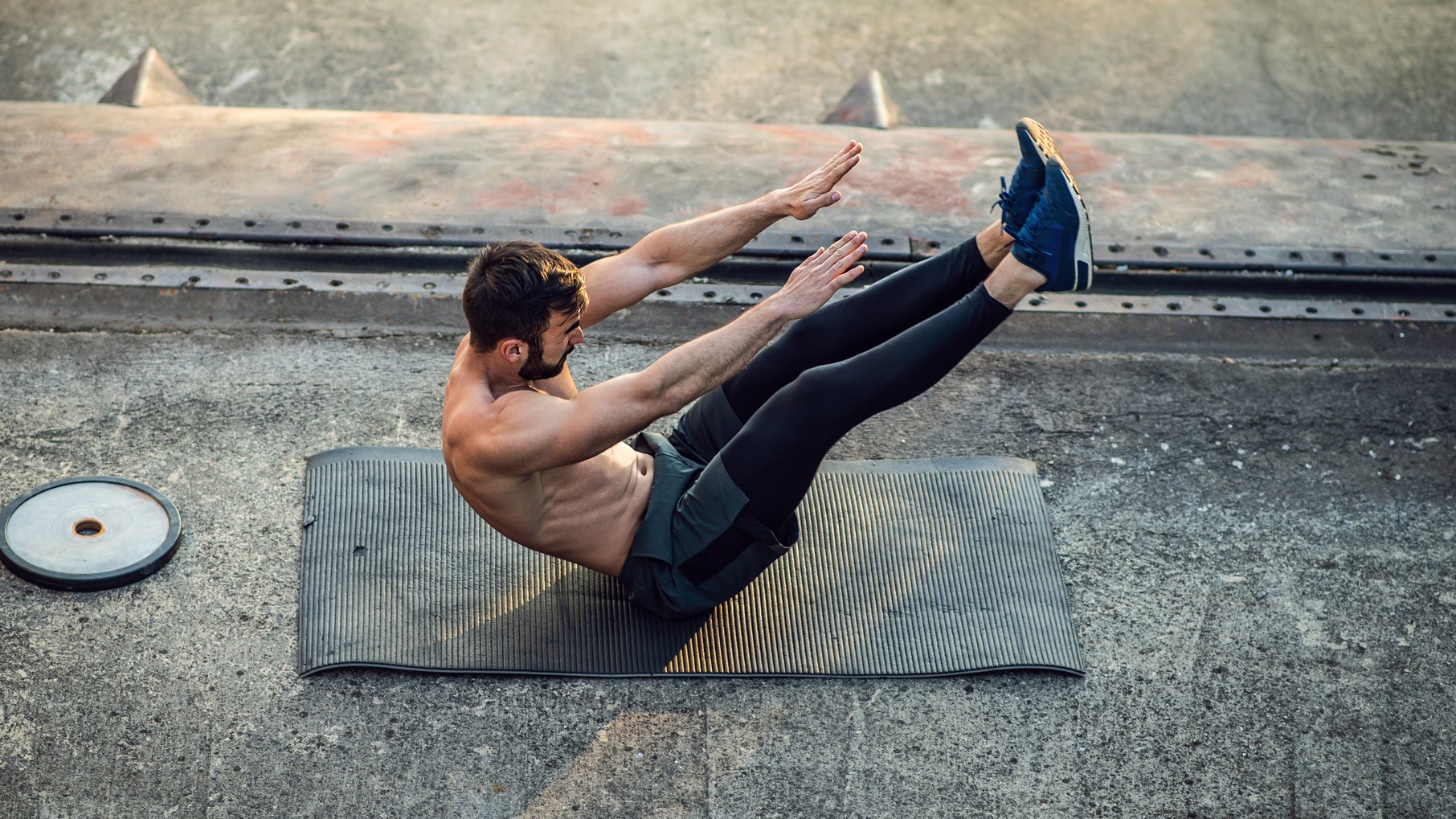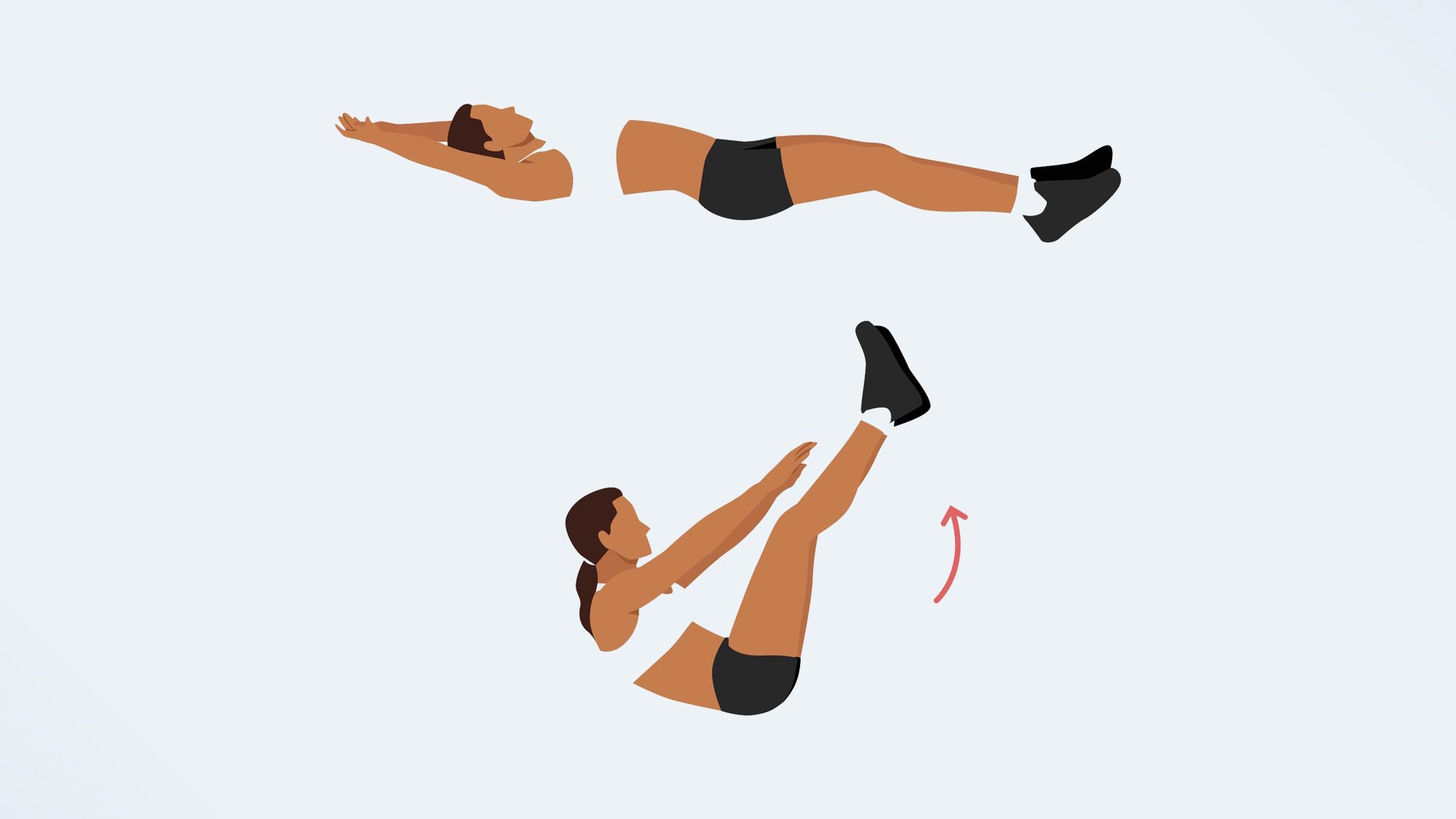Forget planks, I did the jackknife sit-up for a week — here’s what happened to my abs
Your abs will thank you for doing this tough sit-up variation — but maybe not straight away

I’ve done a variety of crunches and sit-ups, and other core challenges over the past couple of years, including tabletop, the x-plank, and the murderous, humbling V-sit-up. The jackknife sit-up is not dissimilar to the V sit-up, which was a worry when my editor offered it to me without looking me in the eye. Nor is the name designed to ease concerns: It puts me in mind of a jackknife dive, which requires a level of coordination I will never possess; an out-of-control 18-wheeler sliding across an icy highway; and, of course, a knife being opened. Jackknife, in fact, suggests an aggressive motion, but this is a move to be done smoothly and if you bear that in mind, it’s a great one.
What is it?
The jackknife is a fairly advanced variation on the sit-up and so this is not one for newcomers to sit-ups or crunches. Even those who are comfortable performing the standard move will find this a challenge, but it’s well worth the considerable effort. It involves raising your legs at the same time as your raise your arms and upper body, but — and this is important — you don’t have to create that V shape beloved of the shamelessly flexible. In fact, you can perform this move using bent legs.
The jackknife works the rectus abdominis (six-pack) muscles, as do most sit-ups, but it also works the deeper core muscles, the transversus abdominis, the layer that acts like a corset for your abdomen and is harder to target. As well as that, it provides a workout for your hip flexors, but make no mistake: this is primarily a core move.
How do you do a jackknife sit-up?

- Lie flat on a mat, legs straight and arms extended so you form a line from toes to fingers. Your palms should be facing each other.
- Engage your core, push your lower back into the mat, and, with your feet together, bend your knees and draw your legs toward your chest. At the same time, raise your head, shoulder blades, and upper back, and smoothly bring your straight arms forward to slide past your thighs.
- Now, slowly return to your starting position, but try to keep your feet slightly off the floor.
- That’s one rep. Aim for three sets of five to 10 to begin with, and progress from there.
If you have a strong core and want a greater challenge, try the straight-leg variation. Keep your legs straight as you raise them, and either slide your arms by your thighs or reach up for your ankles with your straight arms. Again, you do not have to raise your entire upper torso for this move, though some videos suggest you must. Slowly lower to the mat for one rep.
Here’s what happened when I did the jackknife sit-up for a week
Day 1
I’ve become wary of my tendency towards overconfidence as I begin these challenges, and so, on day one I lowered to the mat with the wariness of someone slipping into a hot bath. That said, I began the week with the more difficult straight-leg version, to see if I could do it. I could, just. I clumsily and uncomfortably reached 10 reps and decided I wasn’t ready for this variation. For the second and third sets, I did the bent-leg version, and it was manageable but still tough. My body wanted to leave my legs in the air, as with a normal raised-leg sit-up. This was kind of them, but not the move I was attempting, so I coaxed them back towards the mat with the promise of an easy run in the good shorts. For the rest of the day, I felt the effort all the way through my abs, from just below my ribs almost to my groin.
Day 2
Day two was far smoother than day one, at least for the first two sets. I’ve already noted it but it’s worth restating: You do not need to raise your entire upper body off the floor to get the benefits of this exercise. Indeed, you could injure your lower back if you do (this is not a back-strengthening move). If you can do so with ease, have at it, but it’s not necessary. One way of knowing you’re overdoing things is if you’re dropping back to the mat with a thump. Raise and lower smoothly to get the benefits and protect your body.
Day 3
My entire core was feeling tender after the first two days, which made me wonder about the efficacy of the exercise-ball sit-ups I do most days. For day three, I tried the move on bare floorboards, which taught me a valuable lesson: Use a mat or lie on carpet. I was gliding all over the place, left and right, which meant I wasn’t concentrating on the move, but worrying if I was about to slide under my bed. I was still sore, but also enjoying the intensity of the move. Which is how it goes, sometimes.
Sign up to get the BEST of Tom's Guide direct to your inbox.
Get instant access to breaking news, the hottest reviews, great deals and helpful tips.
Days 4-5
For day four, I completed two sets of 15 with bent legs and one of 10 with (almost) straight legs. My partner spotted me struggling and said she’d give it a try. She dropped to the mat, effortlessly made a V-shape, looked at me while holding this position, and asked sweetly, “Like this?” We’re not speaking now.
The following day, I did three sets of 15, the first two with bent legs and the last with straight legs. I was better at the latter version than I had been, but my knees tended to drift apart (they should be together). If you’re doing the move with straight legs, don’t feel compelled to point your toes at the ceiling; raise them only as far as you comfortably can.
Days 6-7
On day six, I noticed that the muscle soreness has vanished, which amazed me. After less than a week, my body had become used to the movement and decided it could handle it. I did 50.
I ended the week with three sets of 20, all with bent legs. With a little more practice and, perhaps, some work on my flexibility, I believe I could do the straight-leg version with equal confidence, but I was more than happy with the progress I’d made in a week. I had improved greatly, my core felt stronger throughout, and I’d learned a second important lesson: my partner has a mean streak.
More from Tom's Guide
John is a writer and editor based in London. He was worked for magazines such as Runner’s World, Men’s Health, Women’s Health and Cosmopolitan. A keen runner, what he lacks in ability he makes up for with enthusiasm and excuses.

